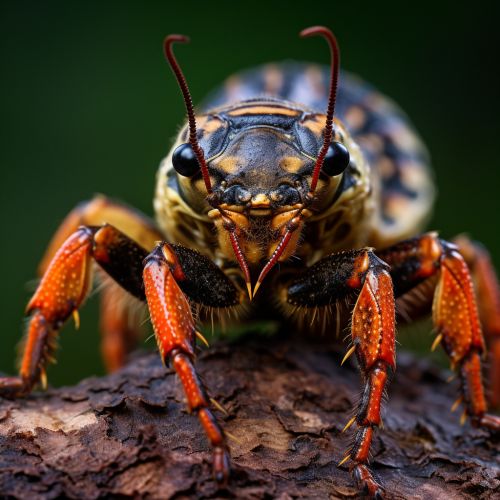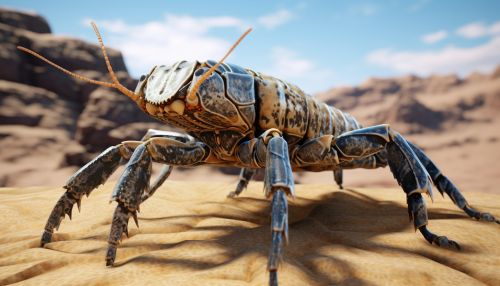Scorpion
Taxonomy and Evolution
Scorpions are a type of arachnid, belonging to the order Scorpiones. They have been on Earth for over 430 million years, with the earliest known scorpions found in the Silurian period fossils. These ancient creatures had marine, semi-aquatic, and terrestrial species, with some of the earliest terrestrial species being the Pulmonoscorpius.


Anatomy and Morphology
Scorpions possess a complex anatomy, with a segmented body divided into two main parts: the cephalothorax (prosoma) and the abdomen (opisthosoma). The cephalothorax is covered by a carapace and includes the eyes, mouthparts, and pincers (pedipalps). The abdomen is further divided into the mesosoma and metasoma, housing the reproductive organs, heart, digestive system, and the tail with the venomous stinger.
Venom and Stinging Mechanism
Scorpions are known for their venomous sting, which they use primarily for prey immobilization and self-defense. The venom is a complex mixture of neurotoxins, enzymes, and other compounds, with effects ranging from mild pain to potentially lethal consequences in humans. The venom is delivered through a stinger located at the end of their metasoma, in a process facilitated by a pair of venom glands.
Reproduction and Life Cycle
Scorpions exhibit unique reproductive behaviors, including a complex courtship dance known as the "promenade à deux". They are viviparous, with the female giving birth to live young (scorplings) after a gestation period that can vary greatly among species. The young scorpions undergo a series of molts, shedding their exoskeleton as they grow, before reaching sexual maturity.
Diet and Hunting Behavior
Scorpions are predominantly nocturnal predators, feeding mainly on insects and other small invertebrates. They employ a sit-and-wait hunting strategy, ambushing their prey when it comes close. Some species also exhibit active hunting behaviors, tracking and chasing down their prey.
Ecology and Distribution
Scorpions are found worldwide, inhabiting a wide range of environments from deserts to rainforests. They are known for their ability to survive in harsh conditions, exhibiting remarkable adaptations such as the ability to slow their metabolism and survive on a single meal for a year.
Human Interaction
Scorpions have a significant impact on human societies, primarily due to their venomous stings. However, they also play important roles in ecosystems, controlling pest populations. In some cultures, scorpions are used in traditional medicine and as food sources.
Conservation Status
While many scorpion species are common and not considered threatened, some are rare and protected by law. The main threats to scorpions include habitat loss, pesticide use, and over-collection for the pet trade.
